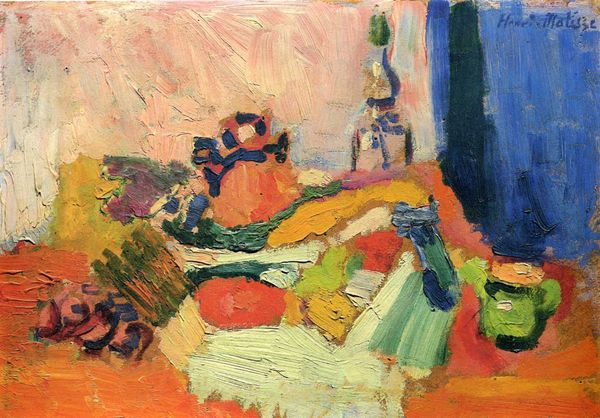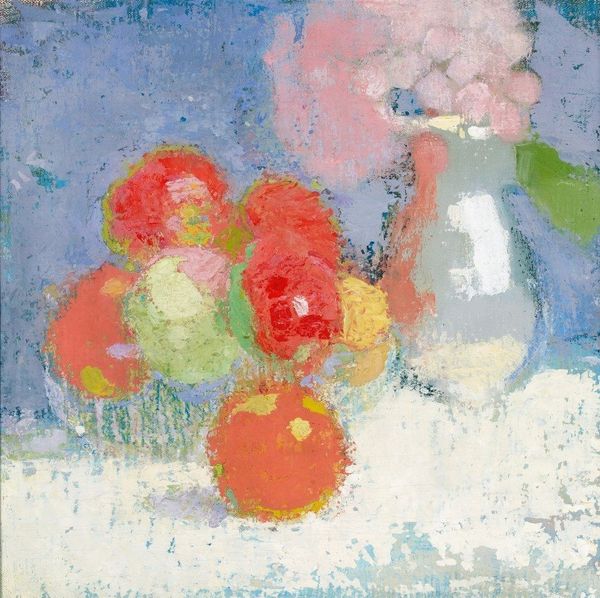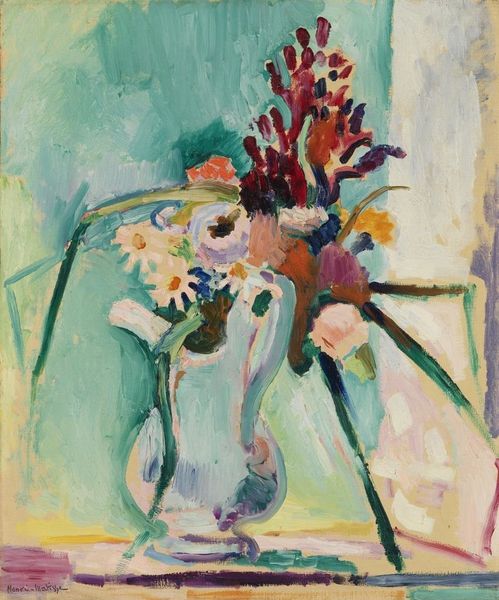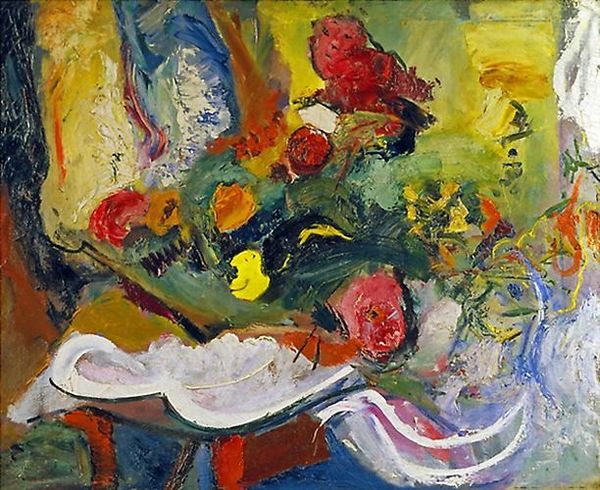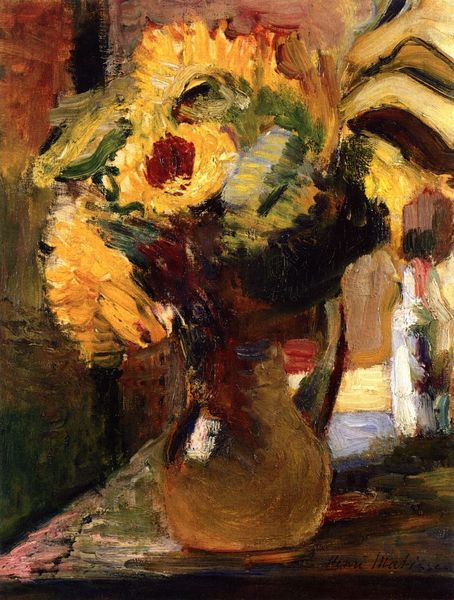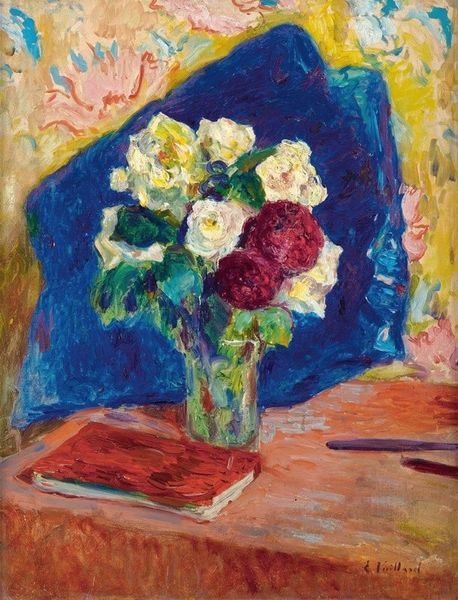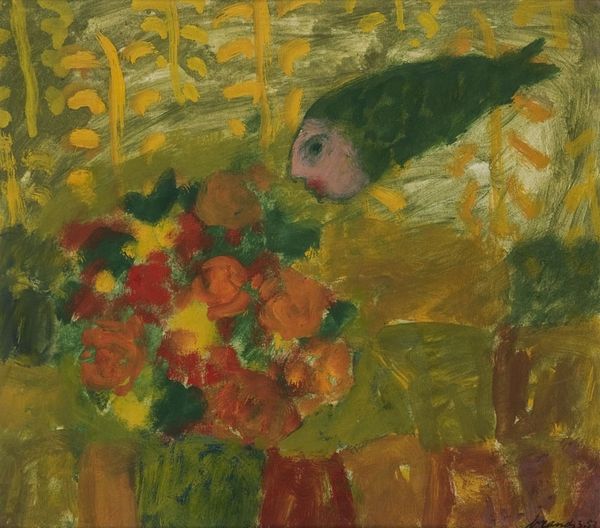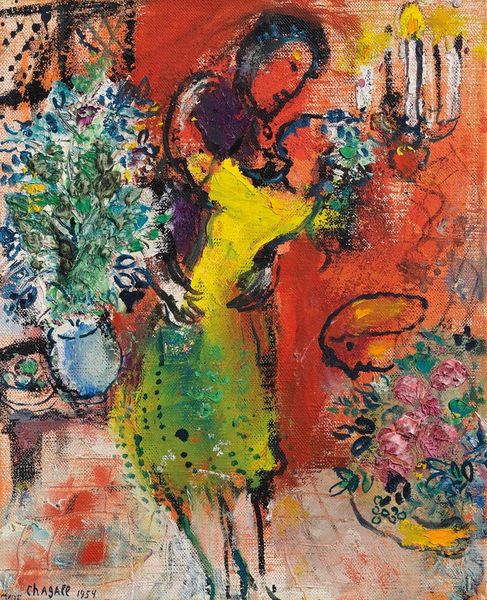
painting, oil-paint
#
fauvism
#
organic
#
fauvism
#
painting
#
oil-paint
#
modernism
Copyright: Public domain US
Curator: Look at the vibrancy! Matisse's "Flowers" from 1907 explodes with color. There's such immediacy in the brushstrokes. Editor: It certainly does. At first glance, the energetic handling of paint strikes me most forcefully. It's a happy chaos of thick impasto, almost sculptural. Curator: It's an example of his Fauvist style in full bloom, wouldn't you say? Those vibrant colors are unburdened by any attempt to realistically depict the flowers. They are symbols of the essence of "flower-ness." Editor: Absolutely, this is Fauvism pushing boundaries. Consider how the domestic space almost dissolves into the vibrant background, rejecting academic conventions around the representation of interiors, or even still-life studies, entirely. The whole composition dances. Curator: Speaking of symbolism, even in what appears to be a straightforward still life, there's always that element of *memento mori*. Flowers remind us of the fleeting nature of beauty, and ultimately, of life. It becomes quite philosophical. Editor: The flowers practically pulsate with vitality here. It’s more like *memento vitae* perhaps. In terms of cultural reception, paintings like this truly liberated early 20th-century art, paving the way for a new wave of subjective expression. Think about what this meant for art galleries, their purpose and role to both display, and sometimes defend, what society considered to be "art". Curator: And beyond galleries, it changed what people might hang in their homes. Art was freed from the academy. The flower, and the way we choose to look at flowers, now bloomed everywhere. Editor: Precisely. With Matisse's Flowers, it's not just a painting of flowers; it's a painting *about* seeing, and *about* feeling alive. The painting gave agency to how the subject sees, as well. Curator: Beautifully put. It's a bold assertion of the power of art to transform the mundane into something radiant and deeply resonant. Editor: Indeed, seeing this piece offers a little insight as to why it remains powerful after more than a century.
Comments
No comments
Be the first to comment and join the conversation on the ultimate creative platform.



